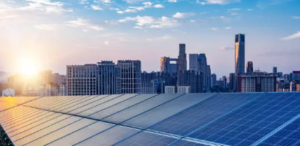Solar energy offers homeowners a clean and renewable power source, potentially cutting electric bill costs. To make an informed decision, however, they must understand its advantages and disadvantages before deciding on solar panels.
 Solar panels Adelaide convert sunlight into electricity, even in winter when there’s less sunlight available. They’re often found on spacecraft or solar farms; they can also be installed at home to help lower electrical costs and save on bills.
Solar panels Adelaide convert sunlight into electricity, even in winter when there’s less sunlight available. They’re often found on spacecraft or solar farms; they can also be installed at home to help lower electrical costs and save on bills.
They don’t require direct sun exposure.
Solar panels Adelaide utilise photovoltaic cells to convert sunlight into energy. As sunlight hits these cells, its rays break atoms apart and release electrons – producing an electric current in your home’s circuits. Unlike fossil fuels, which pose environmental risks and have limited availability, solar energy offers a cleaner alternative that can be utilised anywhere on Earth.
People often mistakenly believe solar panels only work effectively when exposed directly to direct sunlight, but this isn’t true. Solar panels still generate electricity on cloudy days – though their efficiency might not match up to sunny ones due to sunlight passing through clouds and snow, which dilutes its effectiveness.
Solar panel technology has advanced such that shade no longer significantly reduces their performance. Many panels now come equipped with “Christmas Tree” features that help compensate if one panel becomes shaded; other models even utilise optimisers or microinverters to minimise its effects on performance.
They’re a great investment.
Solar energy systems can be an attractive investment for homeowners looking to lower their electricity bills and boost property values. Producing clean, renewable electricity can be used directly at home or fed back into the grid for use elsewhere.
Solar panels are cost-effective on electric bills by cutting their usage; some states even provide incentives to encourage residents to switch over. Depending on your location and electricity rates, your investment can pay for itself within a few years – sometimes much faster!
Solar panels not only save you energy costs but can add value to your home as well. When installing them on a roof free from obstructions such as trees and buildings, you should aim for maximum sun exposure by facing each panel toward either south, southwest, or west; microinverters allow each panel to track the sun throughout its path throughout each season and day.
Solar energy systems can be an ideal way to lower electricity rates and bills for households living in areas with abundant sunshine and those with access to net metering. Solar panels also reduce shade from trees in your yard. They are great weather conditions if combined with battery storage solutions such as Tesla Powerwall for backup in case of grid outages.
They’re easy to install
Solar panel systems convert sunlight into electricity that can be used to power appliances, run a home’s electrical system or sold back to the grid. How much electricity your solar panels produce depends on sun availability in your location; check your energy bill for more details. Solar panels with higher efficiency levels may give your household more electricity faster.
Installing solar panels Adelaide yourself may be possible, but for greater comfort, it may be wiser to hire a professional installer. A professional can help you navigate rooftop environments safely and work safely with electricity. They can also apply for incentives while ensuring installation complies with local building codes and requirements.
Step one in installing a solar panel system involves selecting its location and mounting type. Options available to you include rooftop mount, ground mount or pole mount installations; each has advantages and disadvantages – for instance, a rooftop mount may be easier to install while offering greater flexibility; however, it will typically cost more than its ground counterpart.
They’re environmentally friendly.
Solar panels are an eco-friendly energy solution that doesn’t produce carbon dioxide or other greenhouse gas emissions. They are suitable for remote areas where traditional electricity generation cannot reach. Furthermore, solar panels reduce dependence on fossil fuels while conserving water by eliminating cooling systems needed in conventional power plants.
Traditional solar panels use silicon, an element found in sand that produces an electric charge when exposed to sunlight. Solar cells made with this material include polycrystalline silicon, amorphous silicon, and thin-film solar cells, with polycrystalline using hydrofluoric acid and cadmium to produce silicon. At the same time, researchers have created an alternative process that eliminates such hazardous chemicals.